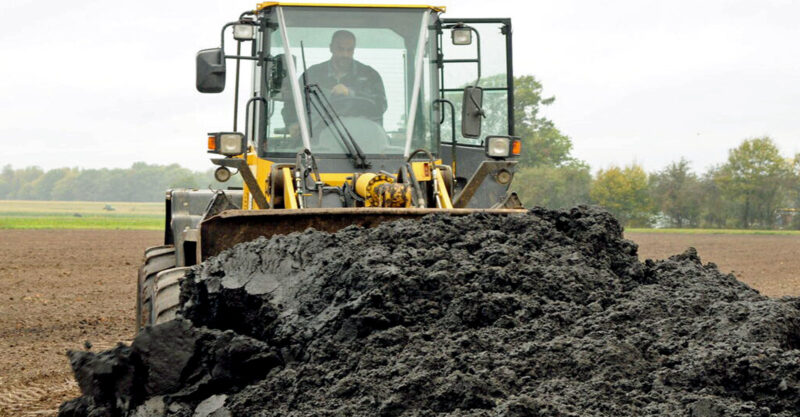Miss a day, miss a lot. Subscribe to The Defender's Top News of the Day. It's free.
By Shannon Kelleher
Highlighting a practice that compromises farmland nationwide, a new report finds that sewage sludge spread as fertilizer on New York state fields contains toxic chemicals that sicken farmers, contaminate crops and threaten consumer health.
The report, published Thursday by the Sierra Club Atlantic Chapter, suggests that the New York State Department of Environmental Conservation (NYSDEC) has failed to prevent dangerous per- and polyfluoroalkyl substances (PFAS) from entering the environment through the practice and urges the state to put a stop to the contamination.
“What we are talking about here is the active permitting… of PFAS-contaminated sewer sludge being spread over farmland to create food that we then consume,” New York state assembly member Anna Kelles said in a press briefing.
Kelles continued:
“It’s literally creating a mechanism to get PFAS to bioaccumulate in human tissue.”
Kelles is working with Senator Rachel May to pass a bill that would require wastewater treatment plants to test effluent for PFAS contamination.
PFAS chemicals are associated with serious health conditions including cancers, thyroid disease, liver damage and harm to pregnant women and babies.
These so-called “forever chemicals” take hundreds of years to break down in the environment and are harmful even in tiny concentrations.
An enormous risk
“We’re taking an enormous risk when we spread sludge on farmland,” said Adam Nordell, an organic farmer in Maine.
Nordell was forced to learn about the risk firsthand the winter before last when he and his wife discovered PFAS in their well water at levels 400 times higher than Maine’s interim drinking water standard.
“Our farm had been managed organically for seven years under our management and previously under organic practices for 25 years,” Nordell said in the briefing.
Nordell continued:
“But a prior generation in the early 1990s spread the land with sludge from two wastewater districts for a total of four years.”
A test last spring revealed PFAS levels in Nordell’s blood serum at a staggering 3,500 parts per billion. People with blood serum levels totaling as little as two parts per billion from seven combined PFAS are at risk for adverse effects, according to a 2022 report from the National Academies of Sciences, Engineering, and Medicine.
The problem of PFAS in sewage sludge used to fertilize agricultural fields extends far beyond the Northeast, said Laura Orlando, a senior science advisor with Just Zero, a nonprofit focused on equitable waste solutions.
“I would call it a national catastrophe,” said Orlando.
In the last 30 years, she said that “many millions of tons” of sewage sludge have been spread on farmland from California to Virginia.
“I think the land application of sewage sludge should be banned on a national level, and if we can’t get there anytime quickly, states should follow Maine’s lead,” said Orlando.
In 2022, Maine became the first (and so far only) state to ban the land application of sewage sludge.
A call for immediate action
PFAS were present in all recent New York State tests of wastewater treatment plant sewer sludge (also called “biosolids”) and effluent, according to the report.
Despite the abundance of these dangerous chemicals in sewage sludge, New York is poised to increase the byproduct’s use as a farmland fertilizer.
A draft state solid waste management plan released by New York NYSDEC this spring projects the amount of sewage sludge applied to the land (which it calls “biosolids recycling”) will increase from 31% of sludge generated in 2023 to 57% in 2050.
New York has also proposed interim standards for PFAS in biosolids of 20 parts per billion, which the report described as “dangerously weak” and “significantly higher than Maine’s was before the ban.”
“I like to compare [the proposed standard] to setting a speed limit of 300 miles-per-hour,” said Tracy Frisch, a board member of the Clean Air Action Network of Glens Falls and an author of the study. “It will not protect public health or the environment.”
The report further revealed that the NYSDEC found “alarming” levels of PFAS in sewage sludge from eight treatment plants it tested in 2017, but says the NYSDEC has not tested the land where the sludge was spread as fertilizer.
The report found that the agency also never tested soil or water at the 46 sites where a list compiled by the state noted that sewage sludge or compost derived from sludge had been spread.
“While comprehensive federal action is obviously required, the NYSDEC can immediately take action to curb the spreading of sewage sludge under its existing powers both under state law and the federal Clean Water Act,” write the report authors, noting that Michigan, Colorado and North Carolina implement measures such as requiring some industries to pre-treat effluent to reduce the PFAS that ends up in wastewater.
“New York remains a national leader in responding to the threats posed by emerging contaminants like PFAS and DEC continues to advance efforts to regulate these contaminants,” said the NYSDEC in an email to The New Lede.
The NYSDEC stated that its proposed draft policy will address concerns with spreading biosolids, which it said: “can be recycled and utilized as a soil amendment in New York State when properly treated and processed.”
The U.S. Environmental Protection Agency (EPA) is currently conducting a risk assessment on PFOA and PFOS in biosolids, which its website states will be completed by December 2024.
Originally published by The New Lede.
Shannon Kelleher is a reporter for The New Lede.





